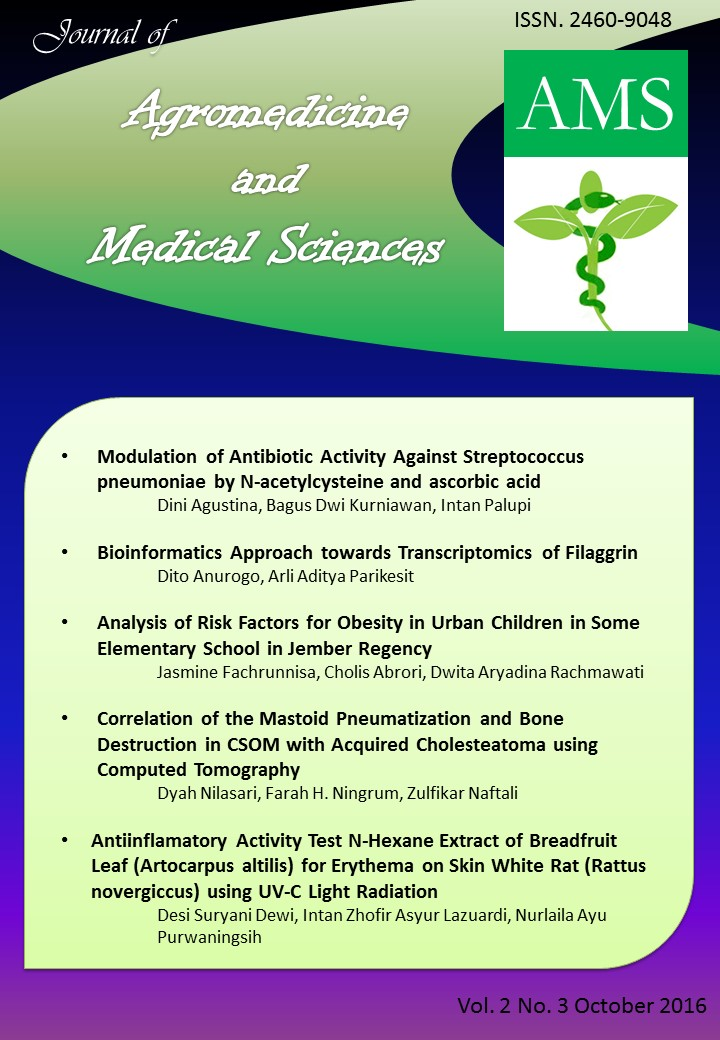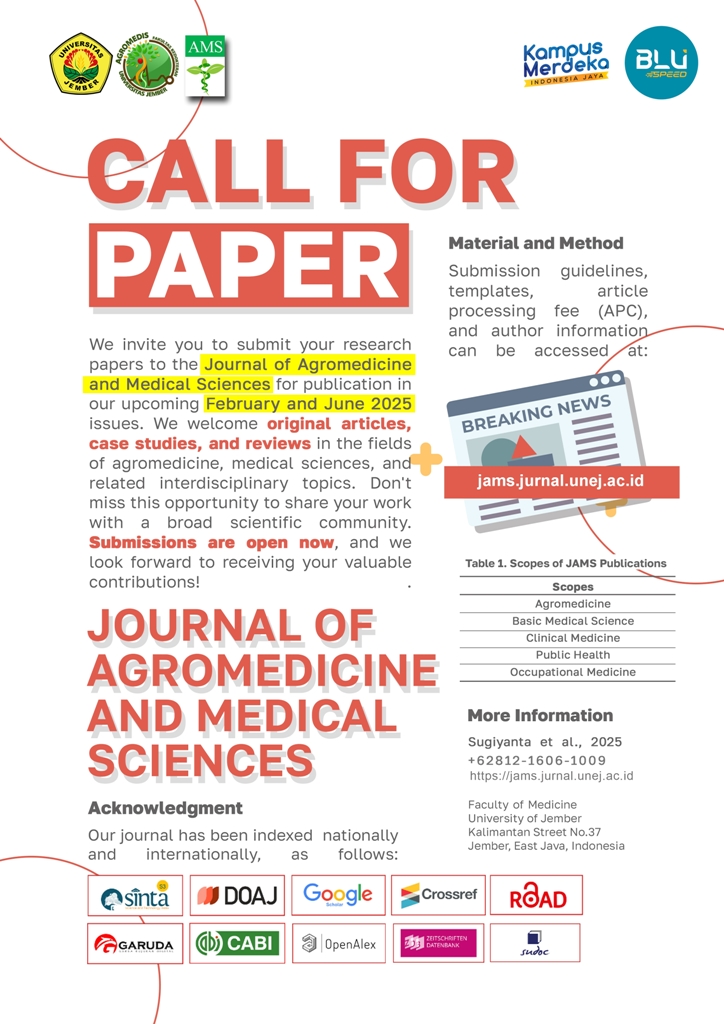Antiinflamatory Activity Test N-Hexane Extract of Breadfruit Leaf (Artocarpus altilis) for Erythema on Skin White Rat (Rattus novergiccus)
Abstract
Ultraviolet radiation (UV) is part of a spectrum of electromagnetic radiation emitted by the sun. UV-C has the shortest wavelength than the wavelength of UV-A and UV-B. UV-C is able to penetrate the earth due to the reduction of ozone in the stratosphere and is capable of causing skin cancer. The initial symptoms of cancer of skin erythema. Researchers used the N-Heksane extract of leaves of breadfruit for the treatment of erythema skin white rat (Rattus novergiccus) were exposed to UV-C radiation for 168 hours. Rats were divided into two groups of control and three experimental groups. The control group was not given the therapy and were treated dexamethasone 1 mg / kg / day while the experimental group was given the extract N-Heksane leaves of breadfruit (Artocarpus altilis) at a dose of 50 mg / kg / day, 100 mg / kg / day and 200 mg / kg /day. The method used is pure experimental (true experimental design) in vivo by design pretest-posttest control group design. Results are extensive changes erythema and ultrastructural changes in the epidermis and dermis rats were observed microscopically before and after therapy in rats irradiated skin UV-C light.
Keywords: N-Hexane Extract Leaves Breadfruit (Artocarpus altilis), rat (Rattus novergiccus), UV-C radiation























